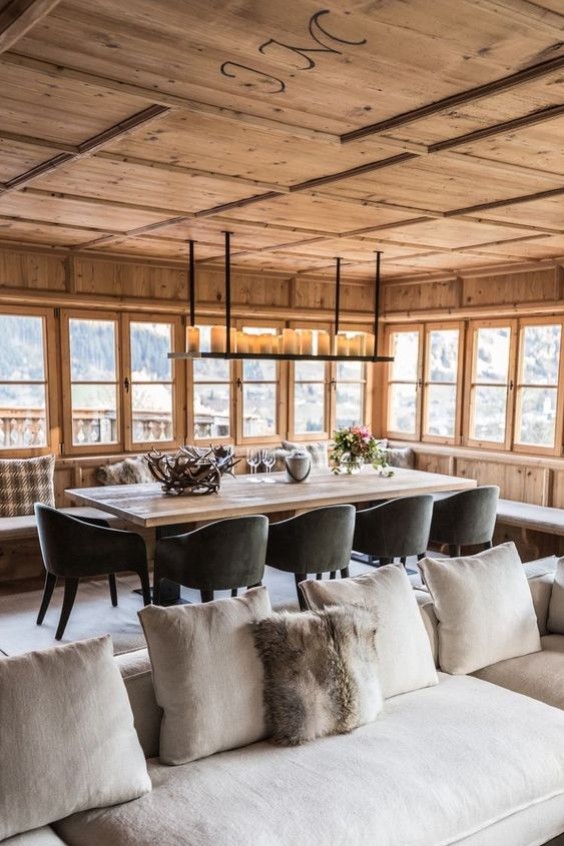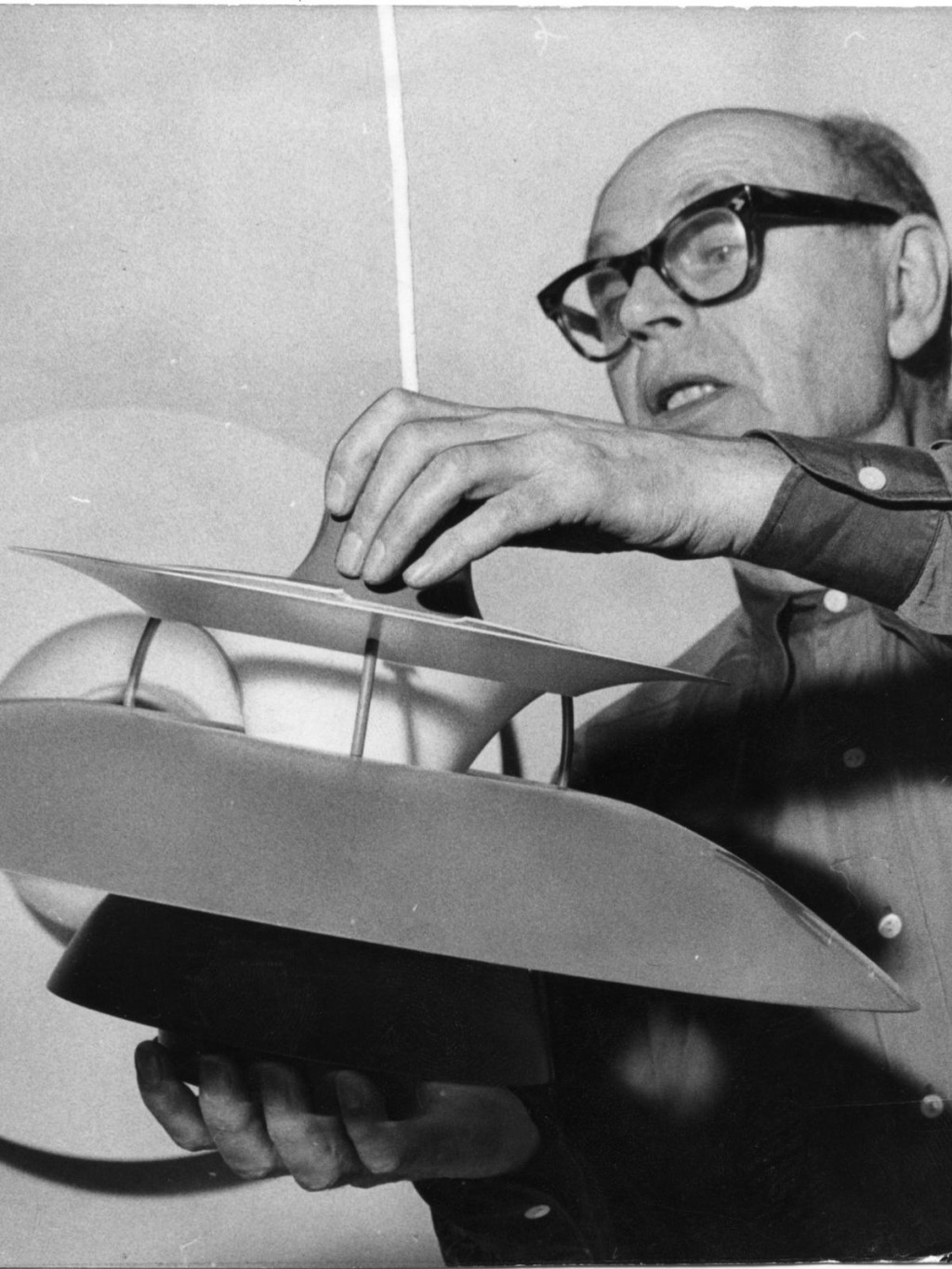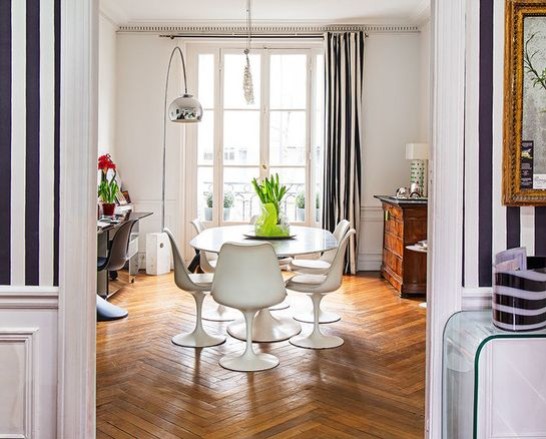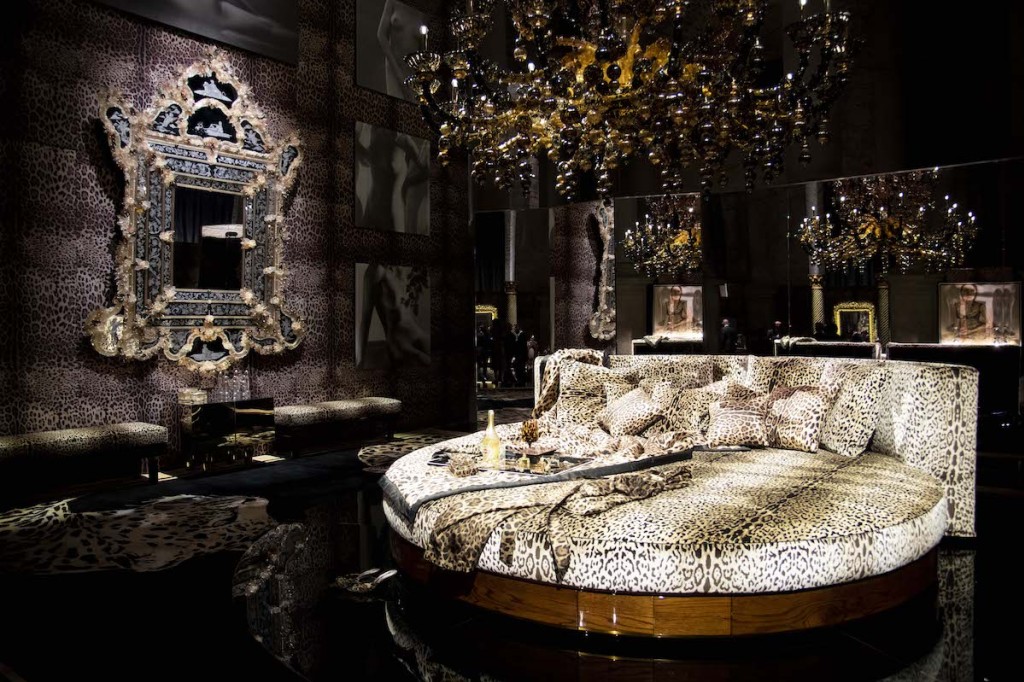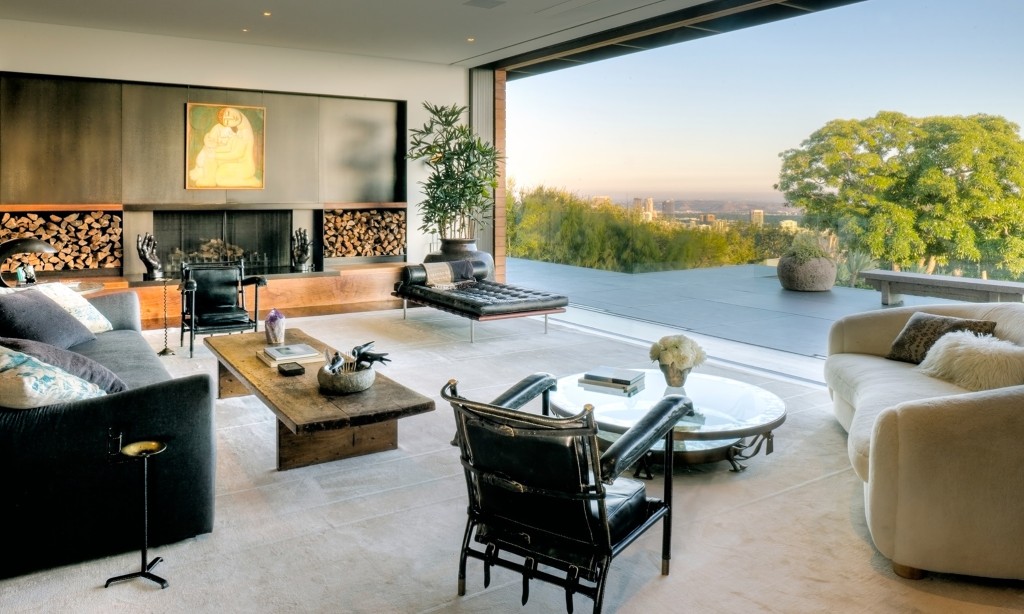Marquetry is a decoration made with veneers of wood and various other materials (mother-of-pearl, ivory, stone, shagreen, non-ferrous metals, straw), usually cut according to a design and glued to a support (furniture, woodwork, or painting). Over the centuries, cabinetmakers have perfected the technique of marquetry to create sumptuous furniture with very figurative or more abstract decorations. In this article, we look back at the evolution of this ornamental technique that was very fashionable during 2 great historical periods and that some contemporary designers are revisiting with taste.

Louis XIV-Régence chest of drawers, 18th century Parisian work stamped JLF DELORME (Jean Louis Faizelot Delorme). A superb example of marquetry work: the structure is made of exotic wood veneer, with inlays of brass, pewter, ivory and ornamentation of varnished chased bronze.
In ancient Egyptian times, some very skilled craftsmen were already practicing inlay by placing pieces of bone, ivory, glass paste and stone into wood. It was not until the 14th century and the Italian Renaissance that Florentines placed thin plates of precious wood or mother-of-pearl - previously cut with scissors - in wooden furniture. Italy is considered the cradle of traditional marquetry.
The seventeenth and eighteenth centuries mark the 1st golden age of marquetry, particularly in France, where the historical context allows the development of richly ornamented furniture (Louis XIV and Louis XV style). Louis XIV undertakes a series of bold works whose objective is to restore the image of power of the Kingdom: restoration of the palace and the Tuileries garden, construction of the modern "Versailles", development of the National Manufacture of Gobelins. The furniture of pomp richly decorated with veneers and inlays is synonymous with wealth: marquetry reaches its peak.

Example of a broken desk made around 1685. Marquetry after Jean Berain I (1640-1711), cabinetmaker: Alexandre-Jean Oppenordt (1639-1715).
It also benefited from the export of precious woods from the colonies (Guiana amourette, Indian rosewood). A man then came to revolutionize the technique of marquetry. André-Charles Boulle (1642-1732), the king's cabinetmaker, developed the technique known as "La Tarsia a incastro" or "part against part". The designs are formed in negative and symmetry. The Atelier Boulle uses copper, brass and red tortoiseshell cutouts.

Max Emanuel of Bavaria's cabinet, circa 1694-1695, marquetry by André Charles Boulle, bois de rapport, ebony, amaranth, maple, walnut, ash, mahogany, palisander, padauk, pewter, brass, and tortoise shell. Chased and gilded bronze. The Boulle workshop very often made "flower paintings."
Although techniques were being perfected, marquetry fell into disuse somewhat in the 19th century before being revived under the impetus of the Art Nouveau movement at the turn of the 20th century. In reaction to the industrial era, Art Nouveau favored furniture with rich ornamentation whose forms were inspired by fauna and flora.
Émile Gallé (1846-1904), a leader of the Nancy School, incorporated wooden marquetry ornaments into the creation of his furniture. In Paris, Samuel "Siegfried" Bing (1838-1905), a dealer in Japanese and Oriental art, disseminated Art Nouveau, including the creations of architects, cabinetmakers, and furniture designers such as Georges de Feure (1868-1943), Eugène Gaillard (1862-1933), and Édouard Colonna (1862-1948).

Splendid molded and carved walnut wood chest by the designer Emile Gallé. The lid and the 3 sides with marquetry background of characters. The sides with marquetry of lumberjacks and their dog, magpies on a snowy forest background. A splendid piece of marquetry!

Black lacquered wood low buffet with rounded sides, design: Georges de Feure, circa 1920. The buffet opens with a door in the front with marquetry decoration depicting a vase of stylized flowers, 2 drawers and 2 lockers Monogrammed "DF".

Tea table with 2 trays signed Louis Majorelle (1859-1926, Ecole de Nancy), 19th century Art Nouveau period. Model "Au Gui l'An Neuf", made of wood veneer of different species (mahogany, walnut...), with inlaid decoration of mistletoe branches and butterflies.

Tea table with 2 trays signed Louis Majorelle (1859-1926, Ecole de Nancy), detail, Art Nouveau XIXth period. Model "Au Gui l'An Neuf", made of wood veneer of different species (mahogany, walnut...), with marquetry decoration of mistletoe branches and butterflies.
Art Deco succeeded Art Nouveau with furniture with more geometric and clean lines. Nevertheless, marquetry remains quite popular, the era belongs to the great decorators who continue to use "rich" materials. Straw marquetry, in particular, experienced a new boom in the 1920s with Jean-Michel Frank (1895-1941) and André Groult (1884-1966).

Double-sided six-panel screen trimmed with straw marquetry with different patterns, design: Jean-Michel Frank. The technique remains quite similar to that of wood marquetry, straw replaces wood veneer.

Rare 2 tiered Art Deco straw marquetry pedestal table made by André Groult.
After this second golden age, marquetry became more discreet after the war. It is no longer really fashionable, but it continues to seduce a public fond of furniture with a careful finish. In France, the furniture house Jansen, revisits old styles with quality materials. Its customers: large international fortunes, the British royal family, whose beautiful marquetry furniture adorns ceremonial living rooms.

Louis XVI-inspired neoclassical desk in mahogany and pastel-stained wood quartefoil inlay dates to the early 1970s, in the spirit of the neoclassical Jansen house of the 1960s - 1970s.
Contemporary designers with a fondness for marquetry include Jean-Claude Mahey, a designer who founded his contemporary furniture company in 1976, specializing in furniture using precious metals and rich woods. Abroad, the Swiss interior architect and designer Dieter Waeckerlin (1930-2013) designs furniture renowned for its high quality of workmanship which appeals to both local and international clients. In Germany, Heinz Lilienthal (1927-2006), one of Germany's pioneers in glass painting and a specialist in metal, wood and concrete wall decorations, makes inlaid tabletop furniture.

Large format executive desk, design: Jean Claude Mahey, 1970s. Lacquered wood and brass finish. The top is decorated with brass "marquetry" and the handles are also brass.

Lamp in burr inlay, Jean-Claude Mahey design, 1970.

Swiss coffee table, design: Dieter Waeckerlin, 1960s. Palm inlay and black metal base.

Swiss coffee table, detail of marquetry work, design: Dieter Waeckerlin, 1960s. Palm inlay and black metal base.

Large "B 40" sideboard with 3 doors and 3 drawers covered with teak inlay, design: Dieter Waeckerlin for Idealheim, 1958.

Vintage fossil inlay coffee table, design: Heinz Lilienthal, 1970.

Vintage coffee table in fossil inlay, detail of inlay work, design: Heinz Lilienthal, 1970.
Inlay work remains very popular in Italy. The town of Sorrento in the Bay of Naples has a centuries-old tradition of inlaying precious woods. Some "historical" houses, such as the Basile house created in 1930, still continue to make furniture in precious wood made by craftsmen specialized in marquetry (under the brand Studio Hebanon). The great Italian architect and designer Alessandro Mendini (1931-2019), tried his hand at marquetry for the publisher Zanotta in the mid-1980s.

Vintage Italian drinks cart in marquetry of Sorrento, 1950s. A baroque style piece, high gloss ribbon mahogany veneer inlaid with a lovely floral design in blond wood inlay.

Vintage-in-marquetry-bar-furniture signed Vittorio Dassi (1893-1973), 1950. Dassi, an Italian furniture designer, made furniture in the 1940s and 1950s made of noble woods such as rosewood, cherry, ash, and walnut, often decorated with inlaid panels and crystal signed by eminent master glassmakers.

Design chest of drawers model Calamobio, design Alessandro Mendini for Zanotta, 1985/1988. Wooden frame and legs, polychrome marquetry.
Modern marquetry continues to appeal: it often combines an assemblage of several woods, includes leather and metal inserts, and plays with colors. Some designers like to happily revisit it to test their creativity.

Rosewood buffet with beautiful inlay work, design: Massimo Morozzi for Edra, 2016.

"Hot rock" cabinet series, design: Bethan Laura Wood, when marquetry is brought back to life... Here laminated marquetry, colored MDF, powdered steel, satin brass. Limited series.
François Boutard

